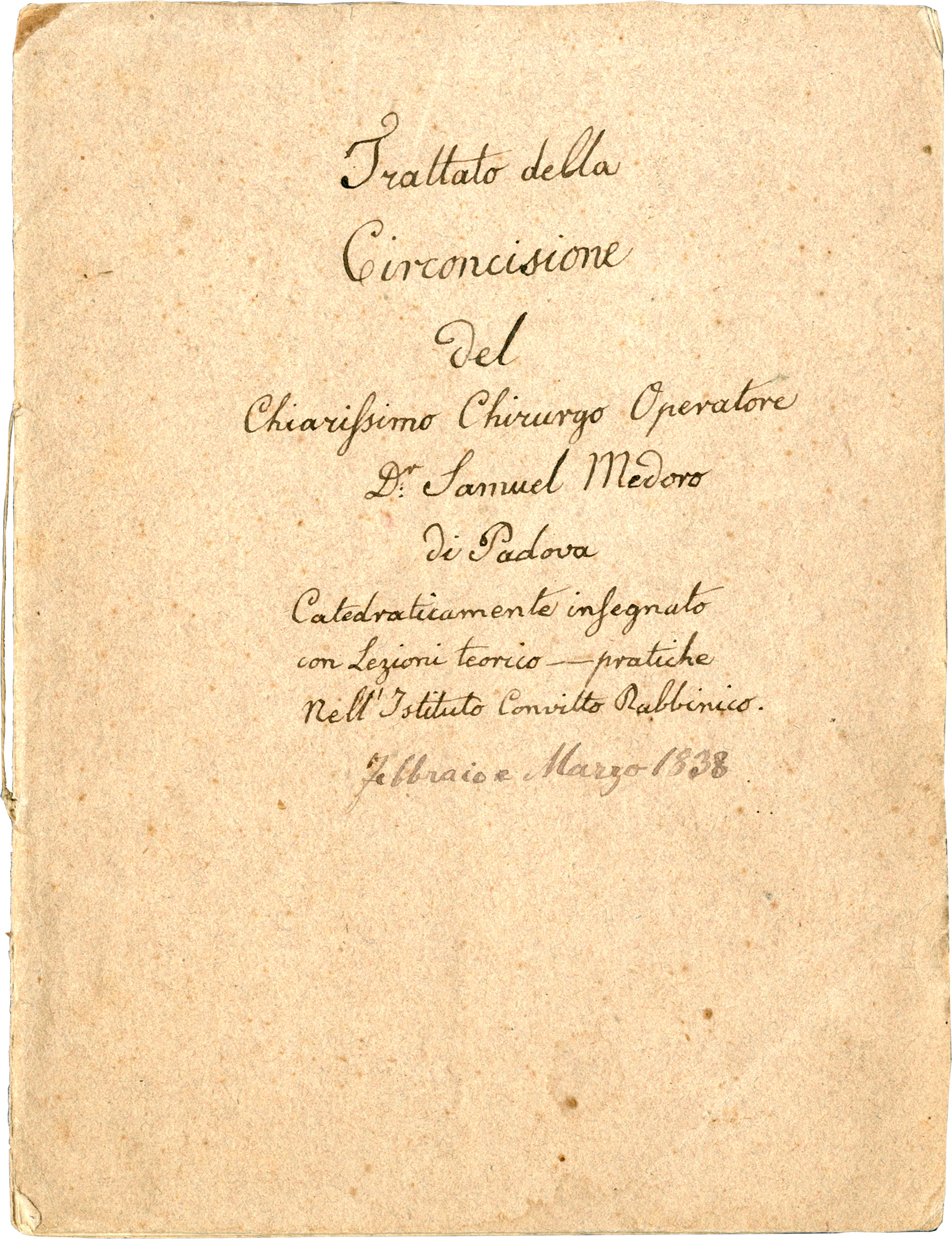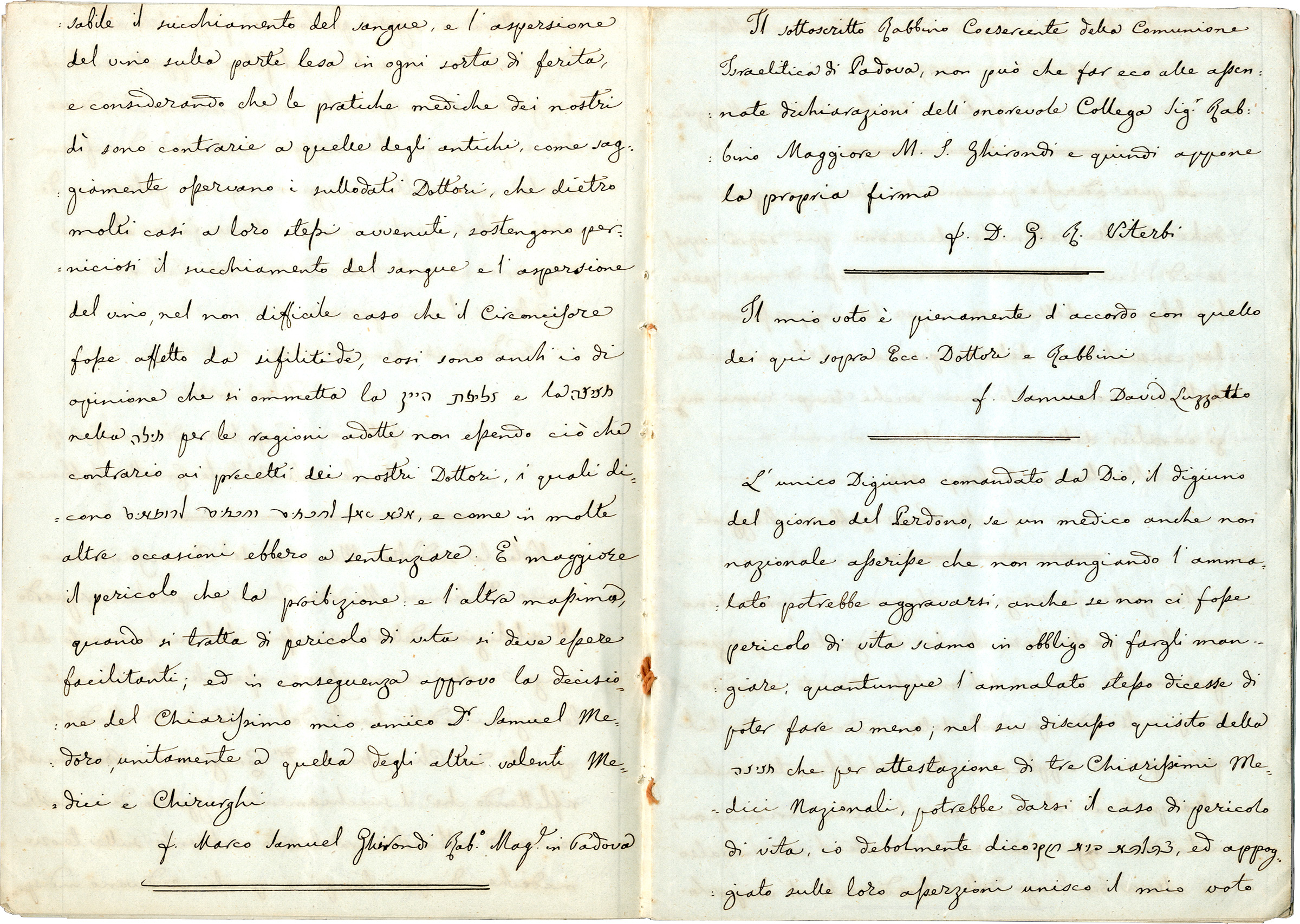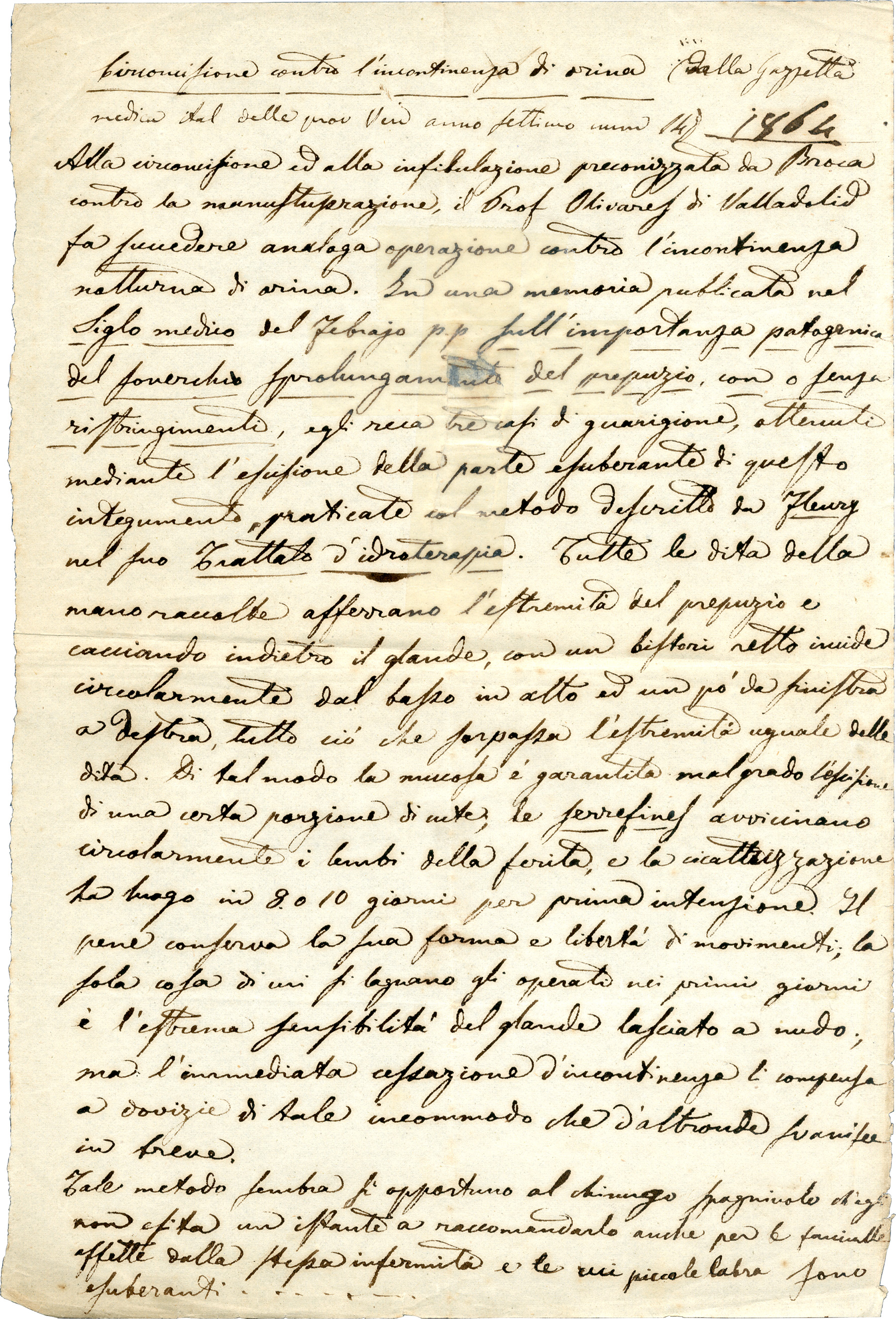Depicted here (left, top) is the frontispiece of a small notebook containing a handwritten text conceived for a course held in the month of February and March, 1838, at the Rabbinical Seminary of Padua by the renowned physician Dr. Samuel Medoro (1788-1854). In his lessons concerning the performance of circumcision, Dr. Medoro supports the abolishment of metsitsah be-peh (sucking by mouth the blood from the wound) from a medical as well as from a social standpoint, not only because it can endanger the newborn's health but also because he deems it to be indecorous. Moreover, his booklet reveals a tight cooperation between the students and appointed teachers at the rabbinical seminar of Padua—the first of its kind in Europe and one of the main centers of the science of Judaism in Italy—and some of the most distinguished Jewish representatives of the medical profession, educated in the best Italian universities (such as the physicians Donato Benvenisti, his son Moise, and Amedeo Conegliano, who served like Medoro himself as surgeons in the local confraternity "Il Sovvegno" which endowed medical assistance to Jews in the city). The importance of this document is manifold. It sheds new light upon at least three aspects of intellectual history of 19th century Italian Jews: first, the role of scientific thought in the redefinition of halakhic boundaries during the emancipation period; second, the diffusion and impact of reformist trends even within the most traditional and orthodox circles; third, the existence of trans-regional networks connecting Jewish communities throughout the different States in which was divided the Italian peninsula capable of implementing concerted changes in Mosaic law. Written prior to the wide-ranging debate that stirred Europe when the newly established in Frankfurt Verein der Reformfreunde (the Society of the Friends of Reform) in 1842 affirmed the optional status of circumcision, Medoro's work proves that religious reforms were addressed in Italy independently from the successes and backlashes of similar trends in the German-speaking areas.
But perhaps the most noteworthy aspect of the bundle of documents purchased by the Penn Libraries at auction in Israel in 2012 is the copies of the responsa of fourteen rabbis written in Italian between November 18th, 1847, and May 6th, 1852, plus a page with excerpts from an article published in the Gazzetta Medica Italiana—province venete, 14 (1864), accompanying Medoro's tractate (left, bottom). These sources, collected and transcribed later in the second half of the 19th century, which recommended the elimination of the metsitsah, reveal an interesting and up to now unknown reformist plan involving the main figures of Italian rabbinate of the time and some of the most important Jewish communities of Central and Northern Italy well before the proclamation of the newly independent and unified Kingdom of Italy in 1861. If on the one hand the religious status of circumcision is defended as compatible with the spirit of the Jewish legislator and required by modern standards of hygiene, on the other some components of its performance, such as the metsitsah and the tselifat ha-yain (wine aspersion over the wound) might be omitted, fusing thereby tradition with modernity, orthodoxy with science in what can be rightfully considered a specifically Italian blend.


